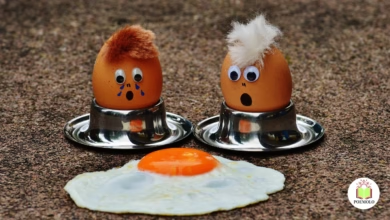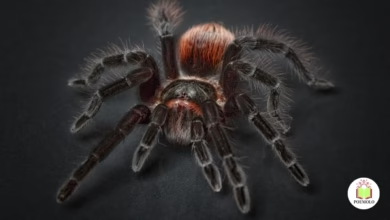Robert Frost, one of America’s most celebrated poets, is known for his deep impression on nature, human emotion, and life’s involution. His works have shaped the American literary landscape, earning him numerous accolades, including four Pulitzer Prizes.
While his poems are widely admired for their vivid imagery and profound insights into the human condition, many readers have asked, did Robert Frost write a poem about his wife? This intriguing question delves into the intersection of Frost’s personal life and his poetic works, particularly his relationship with Elinor White, his wife of over four decades.
Their marriage, marked by both profound love and deep tragedy, has inspired much speculation about whether it influenced Frost’s poetry in a direct, identifiable way.
In this article, I ‘will explore Robert Frost’s relationship with Elinor, how she may have influenced his poetry, and whether any of his works specifically address his wife or their marriage. We’ll delve into the emotional nuances of Frost’s poetry, offering insights into how his personal life—especially his connection to Elinor—shaped his work.
Who Was Elinor White, Robert Frost’s Wife?

Before we address whether Frost wrote a poem explicitly about his wife, it’s crucial to understand the woman behind the influence. Elinor White (born in 1879) was Robert Frost’s childhood sweetheart.
Their early relationship began when they were both students at the prestigious Lawrence High School in Massachusetts. Their bond grew over the years, and in 1909, they married. Their marriage would span more than 40 years until Elinor’s death in 1938.
Related article: Create an Acrostic Poem about the Cotton Gin
Elinor was a quiet, reserved woman who did not seek the spotlight, unlike her husband. Despite this, she played a crucial role in Frost’s life, providing emotional and intellectual support throughout their tumultuous relationship.
The couple had six children, though their family life was marked by personal and familial tragedies, including the deaths of their children, the emotional strain of Frost’s career, and Elinor’s long battle with illness.
While Elinor was not in the public eye like Robert, she was undoubtedly a pivotal figure in his life. Their shared experiences, particularly the grief they endured together, had a profound effect on Frost’s emotional landscape and, consequently, his writing.
The Road We Walk
We walked the path, not side by side,
But shoulder to shoulder, hearts in stride.
Through fields of grief and skies of blue,
The road we walked, was ours to choose.
In every turn, in every bend,
A quiet strength, our hearts would lend.
No spoken word, but in each glance,
A thousand thoughts, a fleeting dance.
The years wore on, the sun grew dim,
But still we walked, on paths so slim.
Through storms that came and winds that howled,
In each other’s arms, we were unbowed.
Though silence stretched, our hands would touch,
A love so deep, it hurt too much.
For loss had come and changed our song,
But still we walked, though time was long.
And now the road, it winds away,
But in my heart, you still will stay.
Not in the words, but in the way
We walked this road, from day to day.
Analysis Table For The Road We Walk
| Element | Explanation |
| Title | “The Road We Walk” – The title suggests a shared journey, symbolizing the relationship between two people, and reflects the metaphor of life as a path or road commonly used in poetry. |
| Theme | Enduring Love and Loss – The poem explores themes of love, enduring hardships, and the quiet strength that partners find in one another through life’s struggles and losses. |
| Tone | Reflective and Tender – The tone is introspective and emotional, with a sense of quiet nostalgia and acceptance of life’s trials, expressed through a calm yet sorrowful reflection. |
| Imagery | Nature and Journey Imagery – The road symbolizes the course of life, with references to “fields of grief,” “skies of blue,” “storms,” and “winds that howled,” enhancing the poem’s emotional depth. |
| Structure | Quatrains with ABAB rhyme scheme – The poem is written in quatrains (four-line stanzas) with an alternating rhyme scheme, giving it a rhythmic flow that enhances its meditative quality. |
| Metaphor | The Road – The road serves as a central metaphor for the shared journey through life, representing the couple’s relationship and the challenges they face together. |
| Repetition | “We walked” – This phrase is repeated throughout the poem, emphasizing the idea of moving forward together and the ongoing nature of the shared journey despite adversity. |
| Conflict | Internal and External – The poem touches on both internal emotional conflict (grief, loss) and external conflict (the challenges life throws at the couple), symbolized by storms and winding roads. |
| Symbolism | “Silence,” “Touch,” and “Path” – Silence represents unspoken communication and understanding between the couple, while touch symbolizes connection despite unspoken words. The winding path symbolizes the unpredictability of life. |
| Climax | “Loss had come and changed our song” – This line represents a turning point in the poem, where the couple has endured loss, altering their lives but not their bond. |
| Conclusion | Unbreakable Bond – The final lines suggest that although the journey is coming to an end, the love and bond shared will remain eternal, reinforcing the theme of lasting commitment. |
| Literary Devices | Alliteration (e.g., “silent song”), Personification (e.g., “the winds that howled”), Enjambment (lines flow into the next without punctuation, creating a sense of continuity), Rhyme (ABAB rhyme scheme). |
The Influence of Elinor on Robert Frost’s Poetry
Frost’s work is often defined by its deep engagement with nature, rural life, and the emotional undercurrents of human experience. Many scholars suggest that Elinor’s influence on his poetry was more subtle but no less significant.
She was not only a source of emotional support but also an intellectual companion. Elinor was known to be well-read and had a sharp mind, often engaging in discussions about literature and poetry with her husband.
Related article: How to Write a Poem on Mother
Though Frost did not often write directly about his family life, it’s believed that Elinor’s presence was felt in many of his poems. In a way, Elinor was a muse to Frost, inspiring poems about the struggles and joys of marriage, the complexities of human relationships, and the pain of loss.
Their life together—their joys, their heartbreaks, and their enduring love—certainly shaped the emotional depth and humanity that characterize Frost’s poetry.
However, despite the profound influence Elinor had on Frost’s creative output, no poem can definitively be identified as a direct depiction of her. This raises an important question: why did Robert Frost never explicitly write about his wife in his poetry?
Did Robert Frost Write a Poem About His Wife? Exploring His Most Personal Works

While Frost did not write a poem titled “Elinor” or directly about his wife, it’s clear that elements of their relationship find subtle expression in many of his works. His poems frequently address themes of love, loss, isolation, and the passage of time—issues that were part of his life with Elinor.
Below, we’ll examine several poems that appear to reflect the emotional complexity of their marriage, offering a glimpse into the way Frost’s personal experiences filtered through his creative work.
1. “Love and a Question”
“Love and a Question” is one of Frost’s most introspective poems about the intersection of love and responsibility. In this poem, the speaker must decide whether to stay with a loved one or face a more painful reality. The poem begins with a question that lies at the heart of all relationships: “A house that is not a house, a door that is not a door.”
This imagery suggests that the speaker is caught between emotional conflict and an unresolved situation—much like the emotional distance that can arise between partners.
While the poem does not explicitly mention Frost’s wife, its examination of the tension between love and duty resonates with themes that were likely part of his marriage to Elinor. Throughout their lives, the couple faced significant personal losses, including the death of their children, which may have tested their bond in ways that this poem explores.
In this sense, the poem can be seen as an emotional exploration of the dilemmas faced by couples who endure both joy and hardship together. “Love and a Question” encapsulates the difficult decisions that individuals make in relationships, especially when the ties of love are tested by tragedy or circumstance.
2. “The Death of the Hired Man”
Another poem that indirectly addresses the dynamics of Frost’s marriage is “The Death of the Hired Man”. In this poem, two characters—Silas and Mary—engage in a conversation about an old farmhand who has returned to their home to die.
The poem deals with the theme of duty, as Silas believes the farmhand has returned to fulfill his final days in the place where he once worked. Meanwhile, Mary sees things differently. She views his return as the result of his own unresolved emotional struggles.
Related article: The Power of Poemac: How Poetry Connects Hearts Across Cultures
While the poem is not directly about Frost and Elinor, it provides insight into the complex dynamics of human relationships, particularly those between spouses. The tension between Silas and Mary mirrors the emotional distance that often arises between partners when communication falters.
This poem speaks to the complexities of love and responsibility, themes that were no doubt present in Frost’s own relationship with Elinor, especially as they faced their personal tragedies.
3. “Home Burial”
One of Frost’s most emotionally intense poems about the friction between husband and wife is “Home Burial”. This poem addresses the disconnect between a married couple who are mourning the loss of a child.
The wife, who is Stunned with grief, cannot communicate her feelings to her husband, who is equally unsure of how to provide the comfort she needs. The emotional conflict between them escalates, as each is unable to reach the other.
While “Home Burial” is not specifically about Frost’s life with Elinor, the emotional struggles depicted in the poem resonate with the couple’s own experiences of loss. Frost and Elinor endured the grief of losing their children, and the emotional chasm between the couple in the poem can be seen as a reflection of the emotional toll that such losses can have on a relationship.
The poem explores the theme of unspoken grief, and how, in the face of profound loss, communication between partners can break down. This was a dynamic Frost likely experienced in his own marriage, and the poem captures the pain and frustration of being unable to connect with someone you love during one of life’s most challenging moments.
4. “The Figure a Poem Makes”
In “The Figure a Poem Makes”, Frost reflects on the nature of writing poetry and the emotional journey that it entails. Though the poem doesn’t directly discuss Elinor, it touches upon the process of creation and the emotional resonance that poetry can carry.
Frost suggests that a poem should evoke a deep emotional response and that it is not just an intellectual exercise but a way to express profound human feelings.
Elinor, as a supportive partner in his life, undoubtedly influenced Frost’s creative process. She was a constant presence in his life, helping him through the rough patches and encouraging his work. In a way, this poem can be seen as a tribute to the role she played in his life, even if it is not directly about her.
Why Didn’t Robert Frost Write a Poem Directly About His Wife?
The absence of poems directly about Elinor is a point of curiosity for many. Some may wonder why Frost, who was so deeply affected by his personal experiences, never wrote a poem that explicitly addressed his relationship with Elinor. Several possible explanations can be considered:
- Frost’s Poetic Style: Frost was known for his ability to write poems that, while deeply personal, were also universal. He often avoided writing directly about his personal life in favor of creating works that would resonate with a broad audience. By writing poems that explored universal themes of love, loss, and human connection, Frost ensured that his work would speak to others in ways that were not confined to his own experiences.
- Privacy: Despite his public success, Frost was a private man. His personal life, especially his relationship with Elinor, was likely something he kept close to his heart. He may have felt that writing about his wife would be too intimate or personal to share with the world. In a way, his decision to keep his marriage out of his poetry may have been an act of preserving the sanctity of their relationship.
- Emotional Complexity: Frost’s relationship with Elinor was not simple. It was marked by both intense love and deep tragedy. Writing directly about such a complex relationship may have been something Frost chose not to do, preferring instead to channel his feelings into poems that were more subtle but still deeply emotional. This allowed him to express his emotions in a way that was less direct, yet still powerful.
Conclusion
Although Robert Frost never wrote a poem explicitly about his wife, Elinor White, it’s clear that their relationship played a significant role in shaping his poetry. His exploration of love, loss, grief, and communication are themes that resonate throughout many of his works.
Poems like “Home Burial,” “Love and a Question,” and “The Death of the Hired Man” all reflect emotional dynamics that could easily be connected to Frost’s experiences with Elinor.
While Frost did not write about Elinor directly, his poems speak to the complexities of human relationships in ways that are deeply personal. Through his exploration of universal themes, Frost was able to convey the emotional truths of his own life with Elinor—without explicitly naming her. This indirect yet powerful expression of his emotional world remains one of the enduring features of his poetic genius.





